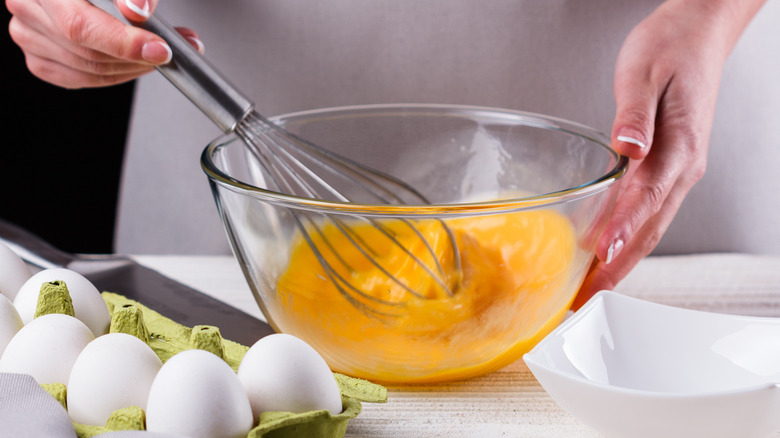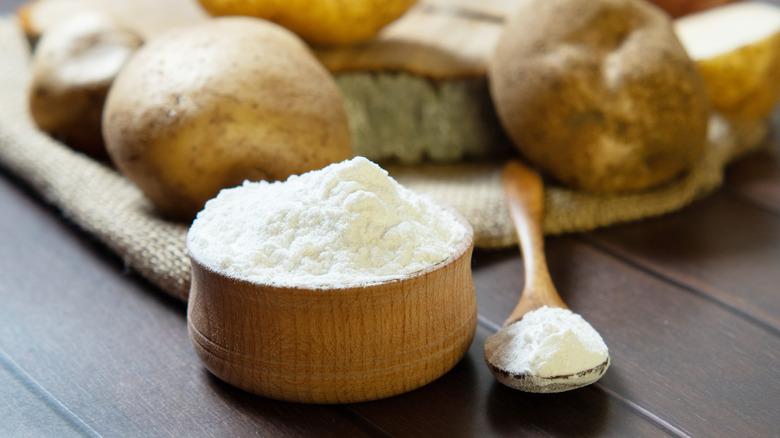Potato Starch Is The Secret To Hong Kong-Style Scrambled Eggs
Not a big fan of scrambled eggs or omelets? You might change your mind after trying the Hong Kong-style take on this classic breakfast staple. Traditionally served in Hong Kong diners — known as cha chaan tengs — Hong Kong-style scrambled eggs have a custard-like and silky texture that sets them apart from the fluffier, French-style scrambles. They're most commonly served up in egg sandwiches with ham, beef, or corned beef, with almost as many variations to the recipe as there are cha chaan tengs in the world. However, there's one crucial ingredient you should never skip out on if you want to recreate that smooth texture: a dash of potato starch slurry.
"The name of the game is emulsification," Chef Lucas Sin explains in his recipe video. In other words, you want to keep all the fat and seasonings from separating from the eggs during the cooking process. Making sure the potato starch is thoroughly mixed in keeps all the ingredients bound together, resulting in a smooth, consistent texture as well as taste. It's also what lets you cook the eggs so fast on high heat without drying them out, since the starch keeps the moisture locked in. Another crucial aspect is the folding as you cook: You should only be cooking thin layers at a time by folding your egg to one side, tipping your pan to drape the uncooked liquid across the hot surface, folding it over, and repeating the process.
Potato starch is more reliable
This tip might sound familiar if you've been keeping up with cooking trends — the addition of cornstarch was a key part of J. Kenji López-Alt's viral scrambled eggs recipe from 2022. Some of you might recognize it as one of the definitive ingredients in whampoa chaodan, or Cantonese scrambled eggs, which are generally considered interchangeable with or identical to what's served at cha chaan tengs. But there's one major difference between cornstarch and potato starch that makes the latter much more reliable when trying to recreate the Hong Kong diner taste at home: Cornstarch performs best at low temperatures for longer cooking times, while potato starch is able to withstand short bursts of high heat without clumping.
Given that your skillet has to be searing hot for the eggs to properly cook in thin, foldable layers, you can see why using potato starch instead might be helpful. Additionally, potato starch is gluten-free and contains far fewer calories than cornstarch, making it a much more accommodating ingredient for any dietary restrictions. Make sure to use lard or oil instead of butter, and white pepper instead of black pepper, and voila — you'll have yourself some Hong Kong-style scrambled eggs as close to authentic as possible.

